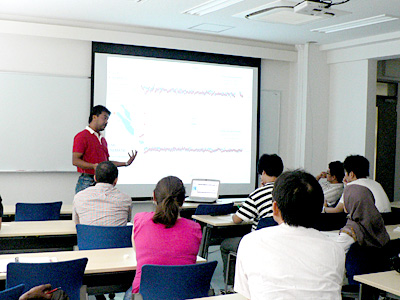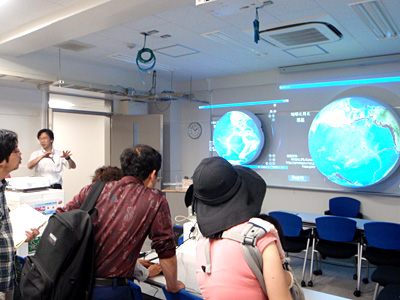Research Activities
- Research Abstract
- Research Themes
- Earthquake & Volcano
Observation and Research Plan - Scientific Research Expenses
& Funded Research - Symposiums
Research Abstract
Understanding Earthquakes and Volcanic Eruptions for prediction

Sudden and unexpected natural phenomena such as earthquakes and volcanic eruptions pose a major threat to the safety and security of our everyday lives. The Earthquake and Volcano Research Center carries out cutting-edge research into how earthquakes and volcanic eruptions work and how they might be predicted in order that their disastrous impacts can be mitigated.
The role of the Center is to better understand the phenomena of earthquakes and volcanic eruptions and mitigate their risks in three ways:
Firstly, through identification of the underground causal factors that occur during earthquakes and volcanic eruptions from seismic observations and observations of crustal movement; secondly, via the development of technology in order to enable new kinds of observations and to solve previous observation difficulties; and finally, by approaching the essential phenomena that governs the crustal activity using theories and numerical simulations.
Another important role of the Center is to develop talented scientists through faculty and postgraduate education who will be able to progress earthquake and volcano research - and the resultant reduction of disasters - into the next generation.
The Frontier of Observation Technology Development
With the introduction of new observation technologies, rapid progress in earthquake and volcano research has been achieved. The development of a high sensitivity seismic observation network and GPS observation network throughout the Japanese Archipelago has disclosed previously unknown phenomena.
The Earthquake and Volcano Research Center is also carrying out next-generation research in order to develop technology that enables previously impossible observations. One example of this is technology is sea-floor geodetic measurement that can observe crustal movement on the ocean floor; to date such observations are only possible on land. As the hypocenters of the great earthquakes that hit the Japanese Archipelago are beneath the ocean floor, it is vital to measure the deformation in the Earth's crust on the ocean floor if we are to understand the nature of the earthquakes. The Center is promoting the developing new technology in this regard.
Another technology, known as ACROSS, uses artificial high precision seismic waves in order to investigate temporal changes in underground conditions. ACROSS vibrator constantly generates seismic waves in order to precisely capture changes in the stresses and coupling at plate boundaries and active fault, and magma movements caused by volcanoes.








